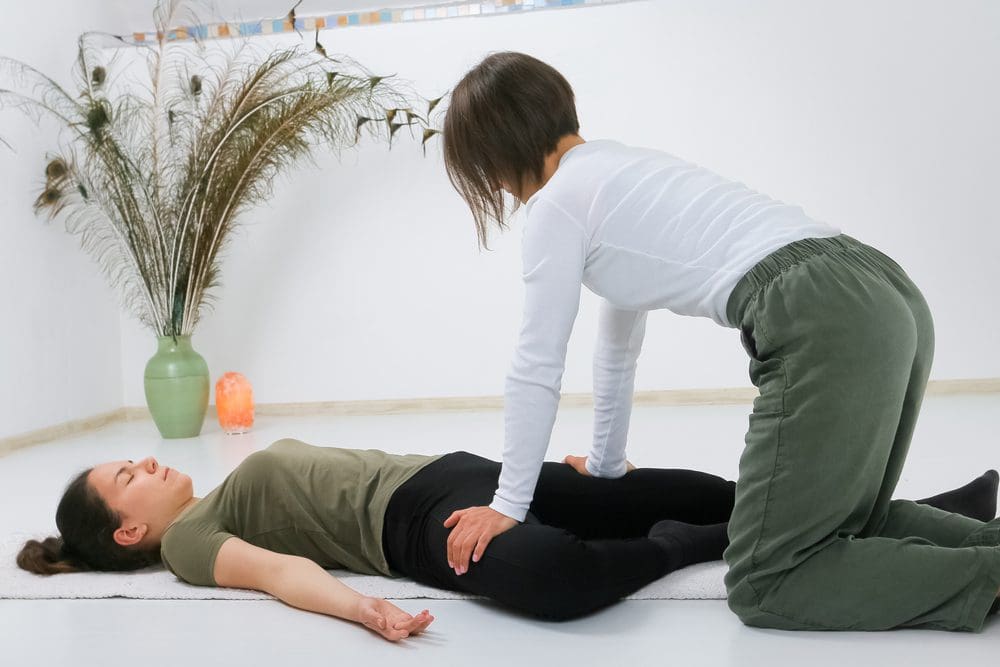Full Disclosure: Clicking on these links could mean a tiny commission for me, at no extra cost to you.
Trauma can often feel like a shadow, following us silently through life, affecting our actions, thoughts, and feelings. For those who carry such burdens, trauma release exercises offer a beacon of hope. These exercises are not just about coping but about moving towards healing, transforming the trauma from a shadow into a source of strength.
Understanding Trauma and Its Impact
Trauma affects people differently, imprinting itself on the body and mind. The effects can be profound, affecting emotional stability, physical health, and overall quality of life. The path to understanding trauma is the first step towards addressing its deep-seated impacts.
The Science Behind Trauma
Trauma impacts the nervous system. It activates the fight, flight, or freeze responses, and can leave individuals in a heightened state of anxiety or fear. Over time, this can lead to chronic stress, affecting various bodily systems and leading to complications like PTSD, anxiety disorders, and depression.
What are Trauma Release Exercises?
Trauma Release Exercises (TRE) are a set of physical techniques designed to help people release the deep muscular patterns of stress, tension, and trauma that accumulate in the body over time. Developed by Dr. David Berceli, TRE involves a series of simple exercises that induce a natural reflex mechanism of shaking or vibrating within the body. This process, known as neurogenic muscle tremors, helps to calm the nervous system and return the body to a state of balance.
The theory behind TRE is rooted in the understanding that traumatic experiences, whether acute or chronic, can lead to a buildup of physical tension and emotional distress in the body. This can manifest as muscle rigidity, reduced mobility, anxiety, and ongoing stress. The exercises specifically target the body’s muscular structure, particularly the psoas muscle, which is often referred to as the “fight or flight” muscle due to its role in stress and trauma responses.
How Do Trauma Release Exercises Work?
The process typically begins with a series of simple, stretch-based exercises to gently stress and fatigue specific muscle groups. The aim is to elicit the body’s innate tremoring response. Participants then lie down in a comfortable position to allow the tremors to occur naturally. These involuntary tremors are the central nervous system’s way of discharging excess tension and returning to a state of equilibrium.
Some key techniques of trauma release include:
- Tension and Trauma Releasing Exercises (TRE): Developed by Dr. David Berceli, TRE consists of a series of exercises that induce shaking in the body, which helps to release muscular tension.
- Yoga: Specific yoga poses help release the physical tension that is stored in the body due to trauma.
- Breathwork: Techniques like pranayama (controlled breathing) help regulate the nervous system and can reduce symptoms of trauma.
- Guided Imagery: Using visualization techniques to confront and soothe traumatic memories.
Benefits of Trauma Release Exercises
The benefits of practicing TRE are extensive, ranging from reduced physical tension and emotional anxiety to improved body awareness and emotional resilience. Here are a few key benefits:
- Stress and Tension Reduction
- Emotional Release
- Increased Resilience
- Enhanced Physical Well-being
Unlock Your Hip Flexors: A Guided Program for Trauma Release
Making trauma release exercises a part of your daily routine can enhance their effectiveness. Consistency is key in the healing process, and integrating these exercises into your daily life ensures continuous progress. As such, we recommend starting a program like Unlock Your Hip Flexors.
Unlock Your Hip Flexors is a specialized program designed to specifically target the hip flexor muscles, which are often key holders of physical tension related to emotional trauma. This program integrates trauma release exercises into a structured routine that can aid in healing and releasing stored trauma.
Why Focus on Hip Flexors?
The hip flexors are a major pivot point in the body, influencing posture, mobility, and the nervous system. Due to their central location in the body, they can become a repository for emotional and physical stress. In the context of trauma, tense hip flexors can contribute to a range of symptoms from anxiety to digestive issues.
Components of the Unlock Your Hip Flexors Program
- Dynamic Stretching: Engaging in movements that stretch and strengthen the hip flexors, improving mobility and reducing tension.
- Static Stretching: Holding stretches for longer periods to elongate the muscle fibers and release tightness.
- Fascia Stretching: Targeting the fascia, the connective tissue surrounding muscles, to decrease restriction and enhance blood flow.
- 3-Dimensional Core Stability Exercises: Focusing on strengthening the core muscles, which supports the lower spine and hips, reducing the strain on the hip flexors.
- Mobility Exercises: Incorporating movements that enhance joint mobility, which can be particularly beneficial for those with tight hip flexors.
- PNF Stretching: Using proprioceptive neuromuscular facilitation techniques to relax the muscles through a series of contractions and relaxations, which can help in breaking the cycle of tension and tightness.
Benefits of Using Unlock Your Hip Flexors
Participants of the Unlock Your Hip Flexors program often report not only physical benefits such as increased flexibility and reduced pain but also significant emotional relief. The program can help mitigate the physical manifestations of trauma, leading to decreased anxiety and a more profound sense of well-being.
Navigating Emotional Releases
As with any trauma release exercise, the Unlock Your Hip Flexors program can lead to intense emotional releases. It is important to be prepared for this and to have supportive measures in place, such as therapy or counseling, to help process these emotions constructively.
Conclusion: Embracing a Comprehensive Approach to Trauma Release
Trauma release exercises, including the specialized approach of Unlock Your Hip Flexors, offer a promising path to recovery for those haunted by past traumas. By addressing both the physical and emotional components of trauma, individuals can reclaim their bodies and minds, leading to a healthier, more balanced life.
By incorporating these exercises into a comprehensive treatment plan, individuals harness the power of their body’s natural healing capabilities, paving the way for resilience and empowerment.
Unlock the path to recovery and rejuvenation now!
Click here to explore the ‘Unlock Your Hip Flexors’ program, and start your journey towards releasing trauma and embracing a life of improved mobility and reduced pain.
FAQs About Trauma Release Exercises
- How often should trauma release exercises be done?
Ideally, starting with once a week under professional supervision and gradually increasing frequency as comfort with the exercises grows. - Can trauma release exercises replace therapy?
While they are beneficial, trauma release exercises are best used as a complement to therapy, not as a replacement. - Are there any risks associated with trauma release exercises?
If not done correctly or without proper guidance, there can be risks such as increased emotional distress or physical injury. - Who can benefit from trauma release exercises?
Anyone who has experienced trauma and is looking for a method to help release the associated tension can benefit from these exercises. - How long does it take to see benefits from trauma release exercises?
Some may feel benefits immediately, while for others, it may take several sessions to notice changes









